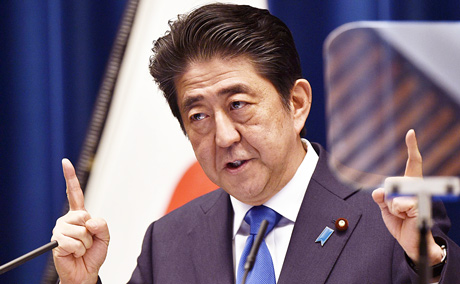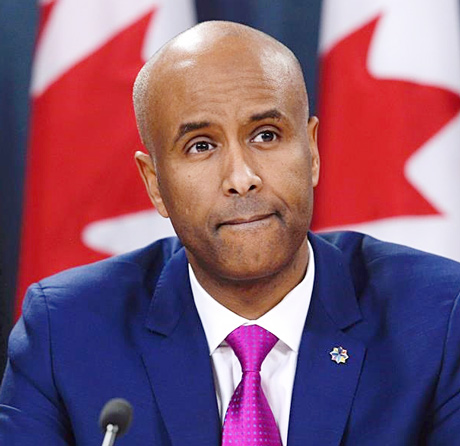In the News
block prompted by Trump's
protectionist policy

The trade ministers of the different Asian nations met earlier this month in Tokyo to take another step toward creating the world’s largest trading bloc and they hope to seal the deal by year end, Bloomberg reported.
“The path towards a year-end agreement is now clearer,” Bloomberg reported citing Hiroshige Seko, Japan’s trade minister. “As protectionism concerns increase globally, it’s important that the Asian region flies the flag of free trade.”
Bloomberg report also said that the new trade bloc will also include 10 members of the Association of Southeast Asian Nations as well as South Korea, Australia and New Zealand. It is expected to cover one third of the world’s economy and nearly half its population.
Even though it’s a big move, there are a few obstacles on the way including India’s requirement that any agreement to reduce tariffs on goods and services should allow for free movement of people. “There are great challenges to the global trading system at this point in time,” Bloomberg reported citing Chan Chun Sing, Singapore’s trade minister. “It serves as added impetus for us to try and achieve a substantive conclusion to the RCEP process.”
China, India and the EU have recently come under pressure from Trump on trade. The US imposed tariffs on $34 billion of Chinese imports from July 6, and Trump has threatened to impose levies on another $200 billion of Chinese goods. If that threat is realised, it could cut as much as half a percentage point off China’s economic growth, and also hit the American economy, economists have said.
During weekend meetings, Prime Minister Shinzo Abe urged fellow leaders to work for an early conclusion of the Regional Comprehensive Economic Partnership in the face of an increasingly protectionist U.S.
Japan has sought to take leadership in shaping the pact as an alternative to a Pacific Rim free-trade grouping that Trump abandoned early this year, the Trans-Pacific Partnership.
Seko and his Singaporean counterpart, Chan Chun Sing, noted there are differences that still need to be resolved, but the participants see reaching an accord as evidence of Asia's commitment to defending free trade.
"This is indeed a moment for us to seize the opportunity against a global backdrop where we are facing headwinds in the trade relationships and the trade regimes," Chan said. Achieving a pact would be a powerful statement to show what RCEP countries stand for, he said.
In a joint statement, the ministers said achieving a pact is important especially "in view of the current global trade environment, which faces serious risks from unilateral trade actions and reactions, as well as their debilitating implications on the multilateral trading system." They also pledged to seek breakthroughs in politically challenging areas.
In his remarks earlier, Abe said a pact among the countries that together make up half the global population has enormous growth potential.
"As we are faced with concerns of the rise of protectionism in the world, all of us in Asia must unite, and our future depends on whether we can keep hoisting our flagship principle of free and fair trade," Abe told the meeting in Tokyo. "Let us be as one and achieve a free, fair and rules-based market in this region."
Trump, who says he prefers bilateral deals, has pulled the U.S. out of the TPP, leaving the remaining 11 countries, from Chile to New Zealand, to work on a revamped version of that pact. Japan is a leading participant in those talks, too.
Trump has imposed high tariffs on steel and aluminum imports and has threatened to add automobiles to reduce America's trade deficit. He has singled out Chinese products, prompting fears of a trade war.
Trump's moves have resonated in Asia, where many countries have prospered thanks to free trade and the expansion of global supply chains.

By Victor Ing and Preet Gill
On June 8, 2018, the Honorable Ahmed Hussen, Minister of Immigration, Refugees and Citizenship Canada (IRCC) introduced Canada’s new Student Direct Stream (SDS) program which fast-tracks study permit applications for international students from China, India, Vietnam and the Philippines.
International students from these countries who meet the SDS criteria can have their study permit applications processed in as quick as four weeks.
International students are a key part of Canada’s immigration program. Currently there are nearly 500,000 international students studying in Canada and the Canadian Bureau for International Education (CBIE) reports that there has been a 20% increase since 2017. Statistics from the CBIE show that almost 56% of international students in Canada come from one of these countries. Similar programs to the SDS have been in place in these countries, however, IRCC has now aligned them into one collective, consistent program to enhance the processing times of applications.
Applications sent through the SDS, are processed more quickly than the regular application processing times which are currently taking approximately seven weeks. The SDS is a perfect option for students who meet the requirements and look to begin their studies in Canada as soon as possible.
To utilize the new, fast-track system, qualifying students must demonstrate that they have the language skills and financial capability to succeed academically in Canada. In his speech, Minister Hussen emphasized the importance of improving the experience of International students in coming to Canada:
“First, we know that international students bring tremendous economic benefits to our country. They contribute approximately $12.8 billion to our Gross Domestic Product and support more than 158,000 jobs. But their contributions to Canada go well beyond that. International students make significant contributions to the schools and the colleges and the universities and the communities in which they reside in.”
With programs such as the SDS, Canada continues to move towards becoming a premiere destination for international students. As IRCC improves its international Student Program, there is intention to further expand the SDS program in 2019 to include additional participating countries.
Students who are able to meet the specific requirements may now be able to take advantage of the SDS speedy processing times. Additionally, applications that are submitted through the SDS system but do not meet the more stringent criteria will still be considered under the regular study permit application process.
The IRCC will fast track applicants who demonstrate the fol lowing:
• a Guaranteed Investment Certificate (GIC) of $10,000;
• payment of tuition fees for their first year of study;
• proof of graduation from a Canadian curriculum high school or provide an accepted language test demonstrating English or, French language proficiency;
• an acceptance letter from a designated learning institution and;
• an upfront medical examination.
Successful applicants must demonstrate a high level of language proficiency. In order to determine language proficiency in either English or French, the IRCC will accept results from an approved language testing center. Students can either obtain an English language test through IELTS and/or TEF for French and must obtain a minimum score of six on each of the four language abilities: reading, writing, speaking and listening.
It is important to note that an acceptance letter from a Canadian educational institution does not necessarily mean that you will qualify under the SDS. As one of the key requirements, it is essential that you are enrolled at an approved designated learning institution (DLI) for international students. Applicants who are seeking admission to English preparatory courses (ESL, EAP, or Intensive English) are not eligible for the SDS program.
Additionally, providing a GIC and proof of payment of tuition is treated as conclusive proof of financial ability, which is far more efficient than the standard requirement of having to demonstrate financial resources such as providing six months of bank statements.
Immigrating to Canada, is a rewarding and exciting opportunity for prospective international students, especially for students who qualify under the SDS program and are able to fast-track their immigration process. Reports from CBIE show that 95% of international students recommend Canada as a study destination and 51% of international students plan to apply for permanent residence in Canada. Once a student has obtained a study permit, they can potentially be on the path to obtaining permanent residence status in Canada. If permanent residence in Canada is your ultimate goal, be sure to register at a school that will qualify for a post-graduate work permit (PGWP) and begin your pathway to Canadian permanent resident faster with the new SDS international application process.
(Victor Ing is a lawyer of Sas & Ing Immigration Law Centre. He provides a full range of immigration services.)
To advertise in ICW call
Call 905-738-5005